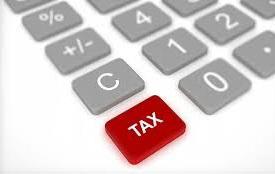Current Affairs December 2017 - Economic
1 - Retail inflation for industrial workers increased to 3.24%

Retail inflation for industrial workers rose to 3.24%. The year-on-year inflation measured by monthly Consumer Price Index for Industrial Workers-CPI-IW stood at 3.24. Food inflation stood at 2.26 per cent against 1.30 per cent in September 2016 and 2.99 per cent during the corresponding month of the 2016. Food group contributed 1.94 percentage points to the total change. The All-India CPI-IW for October, 2017 increased by 2 points and pegged at 287.
2 - CBDT signed two Indian advance pricing agreements

The Central Board of Direct Taxes (CBDT) entered into 2 Bilateral Advance Pricing Agreements (APAs). These Agreements are the first ever Bilateral APAs with The Netherlands. The APA Scheme endeavors to provide certainty to taxpayers in the domain of transfer pricing by specifying the methods of pricing and setting the prices of Distribution, Provision of Marketing Support Services, Provision of Business Support Services, etc.
3 - Government released mid-term review of Foreign Trade Policy 2015-20

The government has released the midterm review of the Foreign Trade Policy. The review highlighted the Goods and Services Tax (GST) as a game changer. The five-year FTP was announced on April 1, 2015. The government has set an ambitious target of India’s goods and services exports touching $900 billion by 2020. The government announced incentives worth Rs 8,450 crores and an additional 2% incentive for labor-intensive sectors.
4 - Direct tax collections rose to 14.4%

Direct tax collections registered a growth of 14.4% during April to November of 2017-18. Tax collections stood at 4.8 lakh crore rupees, which is 14.4 per cent higher than the net collections as compared to last fiscal. The net direct tax collection represents 49% of the total budget estimates of 9.8 lakh crore rupees for direct taxes for 2017-18. The gross collections before adjusting for refunds have increased by 10.7% to 5.82 lakh crore rupees during April to November of 2017-18. Refunds amounting to over one lakh crore rupees have also been issued during the period.
5 - Construction equipment industry expected to grow at 14 %

The construction equipment industry is expected to grow at 14% after Union Government’s decision to spend over 10 billion dollars over next few years in the infrastructure sector. According to the Chairman of International Construction Equipment and Construction Technology Trade Fair Vipin Sondhi, the sector is optimistic of a stable growth over the next five years. EXCON 2017 trade fair was organized in Bengaluru from December 12 to 16.
6 - Maruti Suzuki listed sixth most valuable Indian firm

According to the list unveiled of the most valued companies on the BSE, Maruti Suzuki became India's sixth most valued firm surpassing State bank of India. Maruti Suzuki India Ltd share price jumped to an all-time high of Rs 9,072 a piece, with its Rs2.74 trillion market capitalization ahead of SBI’s Rs2.71 trillion. The list was topped by Reliance Industries Ltd, followed by Tata Consultancy Ltd (TCS), HDFC Bank Ltd, ITC Ltd and Hindustan Unilever Ltd. Maruti Suzuki created its place in top 6 due to its increasing demand in passenger vehicles market.
7 - Retail inflation rose to 4.88%

Retail inflation rose to 4.88% in November 2017 on account of costlier fuel, vegetables and eggs. The inflation, based on Consumer Price Index (CPI), was at 3.58% in October 2017. Inflation in eggs shot to 7.95% in November on annual basis, as against 0.69% in October 2017. In the fuel and light segment, it was 7.92%, as against 6.36 in October. For vegetables it was 22.48 % in November. On overall basis, the inflation in the food segment increased to 4.425 in November as compared to 1.9% in October 2017.
8 - UN reported GDP forecast of Indian economy at 7.2% in 2018

UN reported GDP forecast of Indian economy at 7.2% in 2018 and 7.4% in 2019, on the back of strong private consumption, public investment and the ongoing structural reforms. It is unveiled that the credit growth is subdued despite monetary easing, but bank recapitalization and the Indian Bankruptcy Code (IBC) have the potential to revive credit growth. The 'World Economic Situation and Prospects 2018' report unveiled by United Nations Department of Economic and Social Affairs (UN DESA) admits economic outlook as “largely favorable”.
9 - ADB lowers India’s GDP forecast for FY18 to 6.7%

According to Asian Development Outlook Update 2017 report, the Asian Development Bank (ADB) lowered India's GDP forecast for Financial Year 2017-18 by 0.3% to 6.7%. It also revised the growth forecast to 7.3% in 2018-19 from earlier 7.4% mainly due to rising global crude oil prices and soft growth in private sector investment and weather-related risks to agriculture. As per the report, growth in the People’s Republic of China (PRC) is now expected to expand by 6.8% in 2017 and 6.4% in 2018. Growth projections for the United States remain unchanged at 2.2% in 2017 and 2.4% in 2018.
10 - Wholesale inflation jumped 3.93% in November

Inflation based on the wholesale price index rose to 3.93% in November 2017 due to an increase in the prices of onions and seasonal vegetables. Wholesale inflation was 3.59% in October 2017 and 1.82% in November 2016. The wholesale inflation in food articles increased to 6.06% in November from 4.3% in October. Wholesale inflation in onions surged to 178.19% in November and in seasonal vegetables, it jumped to 59.8%. But inflation in eggs, meat and fish as a category dropped to 4.73% during the month.
11 - Initiatives taken by GoI to boost GDP growth

The Government of India has taken various initiatives to boost the GDP growth. As per the quarterly estimates of Gross Domestic Product (GDP) released by Central Statistics Office (CSO), the growth rate of GDP at constant (2011-12) market prices has increased from 5.7% in the first quarter of 2017-18 to 6.3% in second quarter of 2017-18.
The various initiatives are:
fillip to manufacturing
concrete measures for transport and power sectors
comprehensive reforms in the foreign direct investment policy
special package for textile industry
push to infrastructure development by giving infrastructure status to affordable housing, higher allocation to highway construction, focus on coastal connectivity.
lower income tax for companies with annual turnover up to Rs 50 crore
further measures to improve the ease of doing business
introduction of the Goods and Services Tax (GST)
12 - Government approved Dish TV merger with Videocond2h

The Ministry of Information and Broadcasting (MIB) has approved the merger of Videocon d2h with DishTV. Dish TV India Limited (Dishtv) is Asia Pacific’s largest direct-to-home (DTH) company and part of the Essel Group. The new entity will be called Dish TV Videocon Limited. The combined entity will serve more than 29 million subscribers. For the year ended March 2017, the total revenue of Dish TV and Videocon d2h (at a proforma level) stood at Rs 6,086 crore.
13 - Ola acquired Foodpanda India

Ola has acquired online food delivery start-up Foodpanda India from its German Parent Delivery Hero AG in an all-stock deal. ANI Technologies Pvt. Ltd which operates Ola will infuse $200 million in Foodpanda India’s operations. Foodpanda’s India business will be transferred to Ola in return for shares in the Indian ride-hailing firm. Ola’s biggest rival, Uber Technologies Inc., has already entered into the online food ordering and delivery segment through its unit UberEATS.
14 - Iraq becomes leading oil supplier to India

Iraq has overtaken Saudi Arabia to become top crude oil supplier to India in the current fiscal due to its discounted price. Saudi Arabia supplied 21.9 million tons (MT) of crude to India between April and October 2017, while Iraq supplied 25.8 MT. India has so far imported 125.8 MT of crude oil, worth $45.1 billion, in the April-October period. In 2016-17, crude oil imports stood at 213.9 MT, costing USD 70.2 billion.
15 - Exports jumped by 30.55% to USD 26.19 billion

India's exports rose by 30.55% to 26.19 billion US$ on account of improved global demand, government incentives and simplification of GST refund process. Robust growth in outward shipments of gems and jewelry, engineering goods, chemical and pharmaceutical products was found. The government had announced 8,450 crore rupees’ incentives for exporters in sectors like leather and agriculture. Input Tax Credit and Integrated-GST refunds for exporters are being expedited for quick unlocking of their capital.
16 - TCS bagged fresh $2.25 billion outsourcing contract from Nielsen

Tata Consultancy Services signed $2.25 billion outsourcing contract from television ratings company Nielsen. As per new deal, contract has been extended till December 2025. Nielson will purchase services from TCS of worth USD 186 million in services per year from 2021 through 2024 and USD 139.5 million in services in 2025. TCS will provide Nielson with professional services relating to IT including application development and maintenance, BPO, client service knowledge process outsourcing, management sciences, analytics, and financial planning.
17 - Maharashtra topped GST collections in first five months

Since the rollout of the Goods and Services Tax (GST) regime in July 1, 2017, two states Uttar Pradesh and Maharashtra are leading in GST collections in the first five months, among states and Union Territories. The total cess collections by 2 states stood at Rs 30,224 crore. Maharashtra topped by collecting Rs 3,702 crore, followed by Uttar Pradesh at Rs 3,549 crore in CGST. The government has overall collected Rs 92,283 crores, out of which 59048 crore forms CGST and 87,888 crore form SGST.
18 - GST collections decline to Rs 80,808 cr in November

The total revenue collected under the Goods and Services Tax (GST) kept falling for the second straight month to Rs 80,808 crore in November from Rs 83,346 crore in October. The GST collection for the month of July was over Rs 95,000crore, while for August, it was more than Rs 91,000 crore. September's indirect tax collection stood at over Rs 92,000 crore. Of the Rs 80,808 crore, 13,089 crore rupees have been collected as Central GST, Rs 18,650 crore as State GST, Rs 41, 270 crores as Integrated GST and Rs 7,798 crore as compensation cess.
19 - Amazon acquired Security Camera and Video Doorbell Maker Blink

Amazon has acquired wireless security camera startup Blink for an undisclosed amount of deal. The cameras from Blink are supposed to last for two years with just a pair of AA batteries. It does not need a wiring. They’re also relatively inexpensive. Blink recently launched the connected doorbell with a built in camera which also operates off of batteries. The acquisition will help Amazon compete in the fast-growing home security camera market.
20 - India to overtake UK, France to become 5th-largest economy in 2018

According to the Centre for Economics and Business Research (CEBR) consultancy’s 2018 World Economic League Table, India is set to leapfrog Britain and France in 2018 to become the world's fifth-largest economy in dollar terms. Currently India is ranked 7th in the list. The world’s largest economies now are the US ($19.362 trillion), China ($11.937 trillion), Japan ($4.884 trillion), Germany ($3.652 trillion), France ($2.575 trillion) and Britain ($2.565 trillion). China is likely to overtake the United States as the world's No.1 economy in 2032.
21 - Government likely to impose anti-dumping duty on a Chinese antibiotic

The commerce ministry's investigation arm Directorate General of Anti-Dumping and Allied Duties, DGAD has recommended levy of up to 9.48 dollar per kg in its final findings. The DGAD has concluded in its probe that Ofloxacin has been exported to India from China below its normal value, which has resulted in dumping. Ofloxacin is used to treat certain infections including bronchitis, pneumonia, and infections of the skin, bladder, urinary tract, reproductive organs, and prostate gland.
Macro-Economic Fundamentals for the Year 2017-18
| Macroeconomic Indicator |
For Year 2017-18 |
| GDP Growth Rate (%) |
6.0 (Up to Q2) |
| CPI |
3.6% (Q2) |
| WPI |
3.6% (Q2) |
| Current Account Deficit |
US$ 14.3 billion (Q1) |
| Trade Deficit |
US$ 41.2 billion (Q1) |
| External Debt to GDP Ratio (%) |
20.2 |
| FDI Inflows |
US$ 1,350.93 million (As on October, 2017) |
| Foreign Exchange Reserves |
US$ 401,942.0 million (As on December 1, 2017) |























